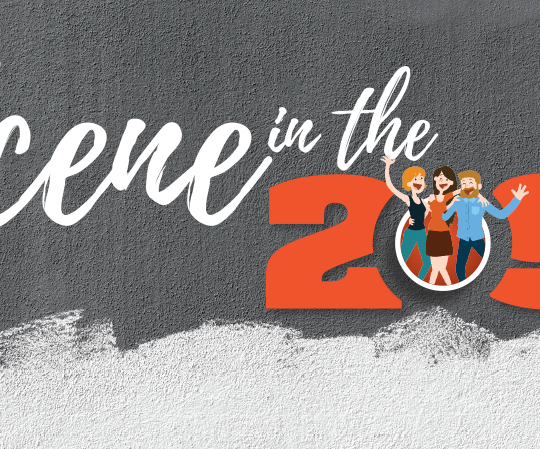Feeding hope is what Second Harvest Food Bank is all about. Although hunger never takes a holiday, the need for help now is greater than what it has been in the past. With the rise in unemployment and early school closures due to COVID-19 the food bank has seen a greater need to distribute food to the community.
Keenon Krick, Chief Executive Officer, and Jessica Vaughan, Executive Assistant/Director of Development, are at the forefront of the distribution center. The location in Manteca receives food from various donors that helps feed children, seniors and families at locations throughout the Central Valley.
“We have over 80 agency partners and three major programs that help us get that food out to the community in the most efficient manner possible,” said Vaughan. “Our main goal is to make food easily accessible to those that need our services. So that is why we do the partners and the programs because if we can put food right in somebody’s backyard instead of having them come all the way to Manteca, we are doing them a better service.”
As have many non-profits and other organizations Second Harvest has also had to cancel a few fundraiser events due to the pandemic. However, organizations have also become creative as local radio station KAT Country 103 and the food bank partnered for an All-California Country concert in May. The virtual concert included country artists Jon Pardi, Gary Allan, Devin Dawson, Tyler Rich and Cam performing on the radio station’s Facebook page using Facebook Live. The successful effort raised over $1,500 in an hour for the food bank.
Vaughan said that KAT Country has been a phenomenal partner and always steps up to help them out, along with rock station 104.1 The Hawk.
Second Harvest began serving the community in 1976 as Good Samaritan Community Services helping low income seniors in San Joaquin County. At the time they collected more food than needed and shared the abundance with other non-profit charities. They joined forces with Feeding America, formerly known as America’s Second Harvest, which allowed them to grow and expand their services. In 2001, they merged with Modesto-Riverbank Stanislaus County Food Bank and formed what is now known as Second Harvest Food Bank of San Joaquin and Stanislaus Counties. They also oversee operations in Calaveras, Amador, Tuolumne, Merced, Alpine and Mariposa counties where they partner with their distribution stations.
Since the partnership with Feeding America, Second Harvest was able to connect with corporate donors like Save Mart, Raley’s, Costco and Winco.
“We are very fortunate they donate to us,” she said about the partnerships.
Along with the corporate donations of food, Second Harvest also hosts food drives where they can receive a good amount of donated items. Vaughan was at a food drive in Ripon in April where they obtained 3,700 pounds of food. There are people who also donate directly to the distribution center.
“The community that we are in, we are very blessed,” added Vaughan. “I think they are incredibly generous. They want to take care of their neighbors and they are doing everything they can to do so.”
The food bank services are essential and with an increased demand of almost 60 percent since the pandemic started, donations, food drives and volunteers are needed more than ever.
“We went from distributing around 228,000 pounds of food per week prior to March to around 350,000 pounds of food per week,” said Krick. “It seems to be continuing to go up and we anticipate with higher unemployment they will be seeking food bank services.”
So as the 80 agencies throughout both counties attain food and distribute the items from their pantries to the community, supplies need to be replenished. Along with the food assistance program, they also offer Food 4 Thought for students, Senior Brown Bag for senior citizens, and the Mobile Fresh Program, which is a mobile pantry that distributes fresh produce twice a month.
“It (Mobile Fresh) is our only direct distribution,” said Vaughan. “ It goes out anywhere between three to four times a week and serves on average 200 to 350 people at a time in a one hour period. It is a very quick way to get a lot of food out to the community fast.”
Along with their regular staff, they are also highly dependent on volunteers. They have had a variety of volunteers including local politicians, Rotarians, different businesses and residents of the area. They have taken all the safety precautions possible for staff and volunteers with constant sanitizing throughout the day, having volunteers wear masks and gloves and 6 feet social distancing markers, as well as locked gates and doors to limit outside access.
“It is a volunteer-driven organization with the packing of the food and everything,” said Krick. “We get food from all these sources and it has to be packaged so we can be sure that we are providing the public the most nutritious food that we can possibly gather for them and get that out in a timely fashion so volunteers are essential.”
The organization is hopeful to possibly have their Chili Cook off fundraiser in August, Hit the Streets breakfast in September and Turkey-okee in November. With several events being canceled already it will have a negative impact financially, so fundraising is imperative for the food bank to continue providing the services that they do.
For more information, visit localfoodbank.org or visit their Facebook page or call 209-239-2091.
“We are all very happy,” expressed Vaughan of being able to provide their services. “Who gets to say every day that they get to go to a job that directly impacts somebody’s life? That is pretty massive.”





